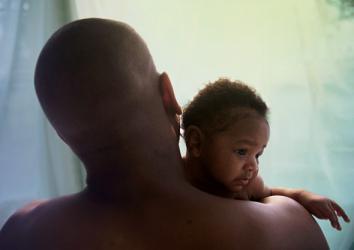In an op-ed published in the New York Times earlier this week, I told the story of Andy Inkster, a transgender man who successfully sued a Massachusetts fertility clinic for sexual discrimination after its doctors refused to treat him. He later sought the services of another clinic and gave birth to a daughter, Elise.
Although Inkster made the transition from female to male at age 18, he left his female reproductive organs intact and conceived via in-vitro fertilization with donor sperm. When compared with conventional ways of having biological children, Inkster’s story is captivatingly novel. But compared to some creative parenting configurations by other transgender people, it’s almost boring.
I spoke with Diane Batzofin, marketing guru and patient coordinator for Dr. David Smotrich, a San Diego fertility doctor whose claims to groundbreaking baby-making include being the world leader in helping patients become parents through surrogacy (with a track record of more than 2,500 cases) and one of the first to use a gestational carrier to help a gay male couple add children to the family. Batzofin says Smotrich has been involved in about half a dozen cases involving transgender patients. There was the case of a transgender man who traveled to California from England in 2006 and had eggs harvested and fertilized with donor sperm; the resulting embryos were then frozen. Two years later, he returned with a female romantic partner into whose womb the embryos were transferred. That way, both partners were able to contribute to the creation of their baby.
In another recent case, a male patient asked Smotrich to freeze his sperm before he underwent sexual reassignment surgery. As a transgender woman, her female partner then used the sperm to become pregnant.
Last summer, while attending a friend’s 40th birthday party, I met a lovely family with this back story: The father was a transgender man who had met his female partner a decade ago when they were grad students. He was a woman then, and they identified as a lesbian couple. Five years later, after transitioning to a man, he married her in what appeared to be a conventional heterosexual wedding. His wife was impregnated with donor sperm, and they have two sons.
As more of the estimated 700,000 transgender people in the United States explore new ways to make families, we’re likely to see even more mixes of reproductive parts and social and gender identities of people and their partners—never mind the sperm, eggs, or wombs contributed by third parties. Hopefully, Inkster’s case will send a message to the fertility field that doctors need to get used to such new models and help their patients achieve their dreams. Even the conservative doctors organization the American Society for Reproductive Medicine, which issued a statement in October 2013 saying that gays, lesbians, unmarried, and single people should not be denied fertility treatment, is currently discussing whether to add transgender people to that list.
In the meantime, more Americans need to get used to stories like the one Andy Inkster told little Elise about her origins. “We’ve read the book What Makes a Baby together, and it explains that babies are made with sperm, an egg, and a place to grow,” he told me. “Her donor, whom she calls her uncle, gave me the sperm, and the doctor mixed the egg and the sperm in a lab—the egg and the sperm did their dance and told each other their stories—and then put the embryo back in Papa’s belly where she grew.”
